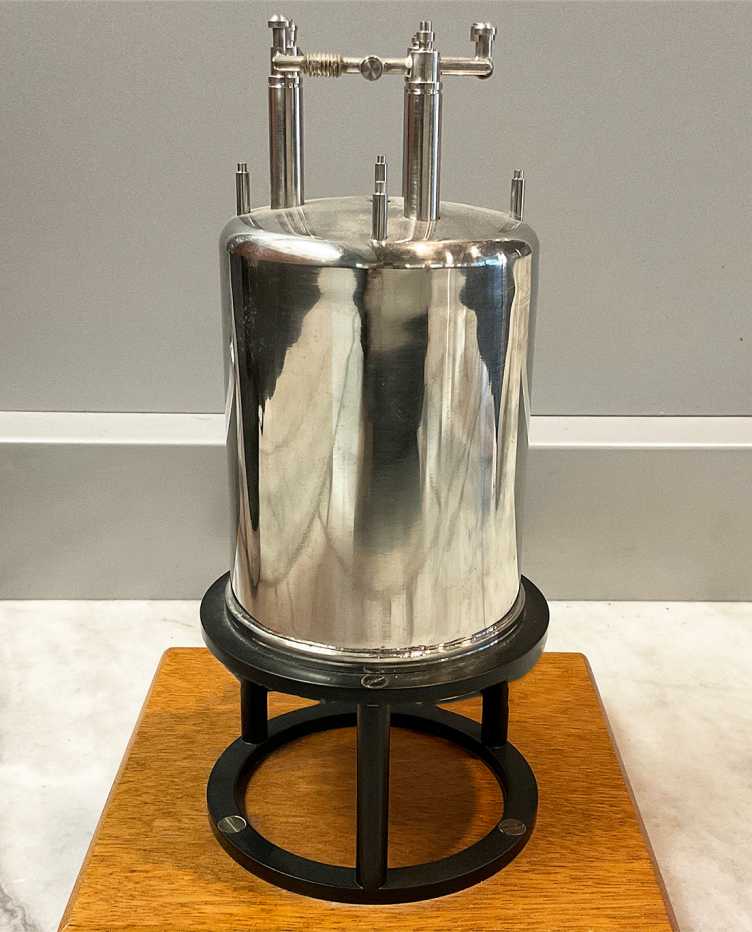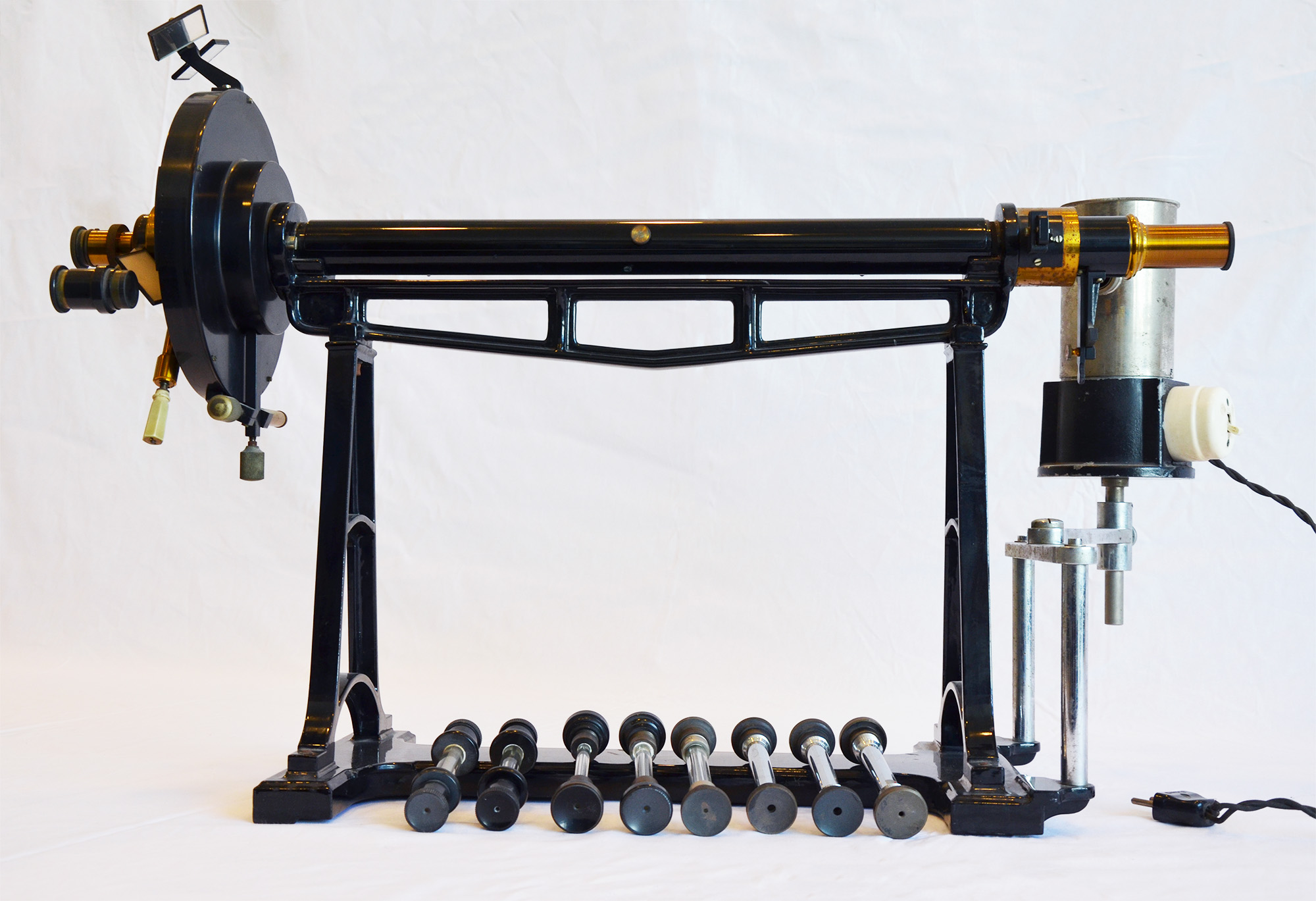From goniometer to NMR
Observing the smallest things in nature – reactions, molecules, atoms – requires special equipment. Today's technology is based on earlier inventions. Some of these historic devices are on display at HCI. A small taste.
Reflection gonimeter

The Wollaston optical goniometer was used to measure crystal surfaces and characterize crystals. The crystal could be mounted on a rotatable horizontal axis connected to a circular disk. Then the crystal was positioned. As the circle rotated, the crystal surfaces reflected light from a light source at specific angles, which could then be measured. The instrument achieved accuracies of up to 5°.
Potentiometer (various historical variants)

The potentiometer was invented by Charles Wheatstone. It is a component of circuits that allows electrical resistance (measured in ohms) to be changed via a sliding or rotating contact. The potentiometer can be used to regulate the power in a circuit, in the introduction of differing resistances, or as a voltage regulator.
NMR – Nuclear Magnetic Resonance

Nuclear magnetic resonance (NMR) is used for the analysis of substances (e.g. for structure elucidation). The method is based on the fact that magnetically active atomic nuclei exposed to a constant magnetic field interact differently with the field. From a careful analysis of this interaction and the interaction of the nuclei with each other, the structure of the molecules in the sample can be determined. The theoretical foundation of this field was laid by Nobel Prize winner Richard Ernst, once a professor at D-CHAB. NMR is used in research and in medical diagnostics (MRI).
Polarimeter
A polarimeter is used to measure the rotation of the plane of polarization of linearly polarized light by optically active substances. The angle of rotation depends on the properties of the substances under investigation and their concentration. Polarimeters can therefore be used to determine the concentration of an optically active substance (e.g. sugar in solution). The largest polarimeter in the collection measures over one meter.

Reading tips

Published in 2020, Richard Ernst's autobiography provides personal insights into the life of a top researcher, with all its ups and downs, and a look behind the scenes of the fascinating NMR world.
Check out the article about the book: Richard Ernst – The man who turned molecules into spies

Carl Hartwich's fascinating collection of books also includes a volume from the early days of microscopy: the "Micrographia Nova. A brief history of microscopy and its first, important steps in medicine (publication only available in German):
Brauckmann B. (2015): Eine neue Sicht der Wissenschaft – wie das Mikroskop den Blick der Medizin veränderte. Schweiz Z Ganzheitsmed. 27:159–163 DOI: 10.1159/000431004